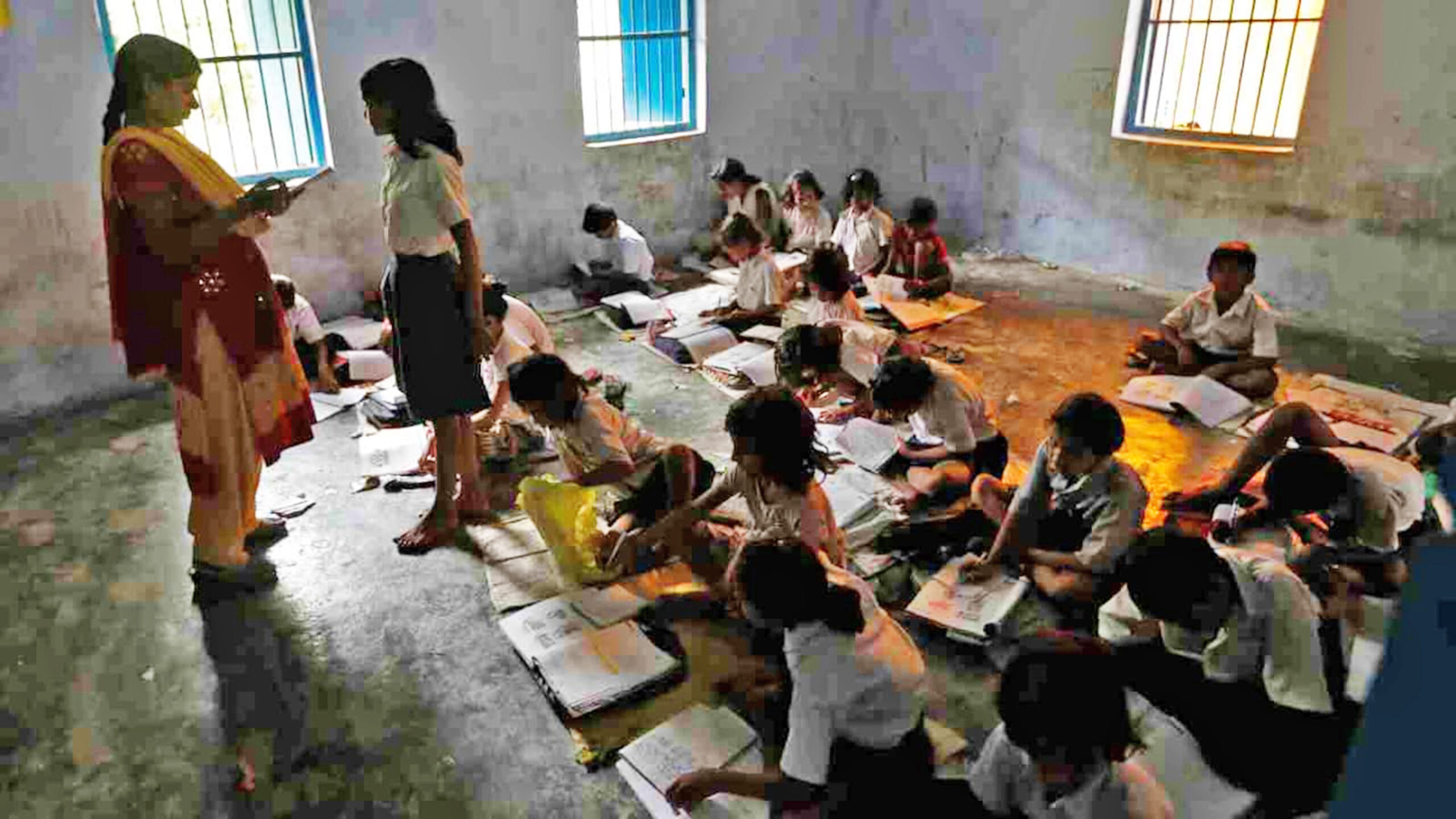As the argument on accepting or rejecting NEP-2020 is going on in certain States of India, the stakeholder must know what this is all about. The academicians and administrators like the Principals, Vice Chancellors, and Directors are often found airing their views on the shortcomings of the policy and logistic problems rather than on the urgency and significance of resetting education system as a whole. Also, the true spirit of NEP is not perceived by them uniformly. Nor do they talk about it.
Further, various State governments depending upon their nearness or distance with the ruling central government have been airing their voice in favor or against the policy essentially based on political considerations. In any case, politicians are not the experts on education or its management. And now, some States are contemplating drafting their own ‘State Education Policy’ (SEP), three years after the acceptance of NEP by the Parliament.
If they had the needed foresight, they could have reimagined futuristic education decades ago rather than wait for NEP only to reject it. Any action of the State Government must be in the interest of its stakeholders and the nation. Time lost in visualizing the significance of resetting Indian education system to match the global standards cannot be regained.
Here I wish to share my perception of the recommendations made in NEP which however may differ from other experts on education. However, different perspectives deserve serious consideration as they offer a choice to choose from. In my view, NEP predominantly provides a ‘vision’ for future education: it should not be seen as a document advocating inappropriate logistic changes and glitches. Understanding why India needs to reset its design of education is very crucial for stakeholders and the country.
It is obvious that the 21st century is characterized by fast changing global scenarios following the digital revolution that came with an unanticipated and impactful big bang. So much so, human life is now largely built around the internet and online activities. Like the three previous industrial revolutions (the textile, mechanization and automation- IRs 1.0-3.0 respectively), the digital revolution (IR 4.0) has caused and causing unforeseen magnitude of job disruptions. Yet it has also created new jobs which demand new skills. Such technological advances therefore call for creative disruption in the existing education system and force us to evolve new strategies to promote learner’s acquisition of creative thinking, critical thinking and problem solving, taking decisions, entrepreneurial skills and making innovations habitually in order to stay relevant in the face of rapid worldwide changes. Accordingly, NEP has made an unarguable recommendation for adoption of modern teaching-learning-assessment processes practiced worldwide as soon as possible. If anything can keep India from progressing to global standards it is quality of education.
Needless to say that resetting our education system will be a turning point for India just as was the economic liberalization policy of our late Prime Minister P. V. Narasimha Rao and then Finance Minister Shri Manmohan Singh (around 1991). Prior to the implementation of the liberalization policy the Indian economy, GDP and foreign currency reserves had hit the rock bottom forcing the country to pledge tons of gold in foreign banks for dollars. The policy became an important turning point for India’s renaissance of the post-independence era. Now more than ever, the country needs another turning point, a creative disruption of education system.
Restructuring courses and curriculums is the key to overcome both job disruptions and future unseen demands. Mere tinkering of the existing courses or focusing on frivolous issues will yield nothing. We need to transform the curriculums by integrating inter and intra disciplinary areas (that became separated for historical reasons as standalone disciplines) and develop novel courses and promote gaining sound foundational knowledge and also help invent new horizons. It calls for metamorphosis of courses. Refusal to metamorphose, the larva remains a larva and averts emergence of a colorful adult (e.g. a butterfly). To provide some examples for developing novel courses, many biological subjects may be integrated to form ‘Modern Biology’. Sociology, social anthropology and social works together can produce a much needed course on ‘Human Sociobiology’. Economics, commerce and business management need integration rather than remain as separate courses. Pundits can visualize more such examples in developing novel courses / curricular programs. Also, tailor-made courses of mathematics, statistics and AI, are needed to strengthen foundational knowledge of all courses. Likewise, compulsory courses on liberal arts (25% of total classes) are needed for multifaceted development of learners.
A second important issue pertains to building brand names for educational institutions and ensuring credibility of credentials (certificates/degrees) that a prospective employer values. While middle class and demographic dividends are rising most schools to varsities are sulking for want of quality teachers, infrastructure (high speed Wi-Fi, modular class rooms with adequate space etc.), curriculums that are truly context based with clarity of content delivery mechanisms, assessment processes, and visionary leaders to man them.
Many education institutions are in a disconsolate and emasculated state even after 75 years of independence and self-rule that is attributable to myopic vision of education ministers and indifference of intelligentsia. Perhaps an extreme case is that of a Patna Government school in Bihar where five different schools of different classes gather in one hall and five teachers simultaneously teach five different subjects using the same blackboard with five columns (source: India TV news of 9 pm of September 16, 2023). If this is the situation of a metropolitan city school and the State ruled by an educated politician (engineer) holding chief minister ship for nearly 18 years, what may be the situation of rural schools is a matter of imagination and conjecture. Clearly education and political leadership fail to go hand in hand. It is high time for intelligentsia to step in to further the cause of basic education. In any case, educational institutions clearly need liberal funding, autonomy and quality leadership on priority. The various regulatory bodies, political bosses and governments should remain a facilitator and not a controller.
In some States NEP-2020 was adopted too hastily without grasping its essence and adequate preparations. This was a mistake. Totally discarding it and launching SEP hastily can become another mistake. The NEP-2020 has provided a template that may require some refinements before adoption. In this process ‘Guidelines & Frameworks’ already prepared by various regulatory authorities can come handy. Reinventing the wheel is a futile, time consuming and costly affair. The States should stop decrying NEP-2020 merely for political reasons and fade out the urgency of restructuring the education system.
Also, it is time for the States to take cognisance of the fact that recently National Council of Educational Research and Training (NCERT) is bestowed with a deemed university status. The fall-out ramifications of this are far and wide. The NCERT has already prepared quality curriculums and books which will be more popular among the students. Moreover, over the years the schools run by the Central Government (e.g. CBSE, ICSE, Sainik Schools etc.) have earned good reputation and credibility both nationally and internationally. Therefore, students coming out of these schools are better trained in comparison to corresponding State run institutions. Expectedly in the near future, Central Government run schools will be in more demand, and they may offer their own UG and PG courses with great credibility and in the process drive the traditional State run education institutions (colleges & varsities) to oblivion. Further, when the State run educational institutions lose out to those run by the Central Government, they promote multiplication of the latter.
To sum up, we need to match education with job requirements and perceivable future challenges. Teaching to innovate is a key element of modern disruptive education. Restructuring, repurposing and resetting education to inspire culture of innovation is inevitable. Make no mistake; the stakeholders are looking for transformational rather than transactional changes.
The author is a former Vice Chancellor of Karnatak University, Dharwad





